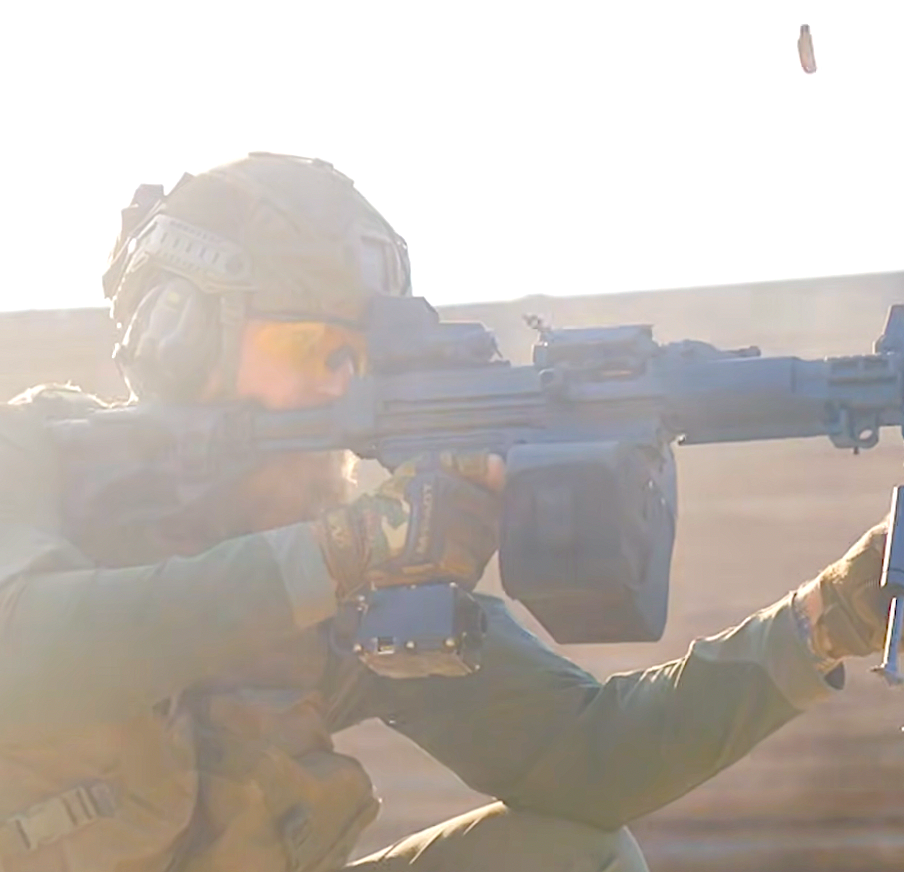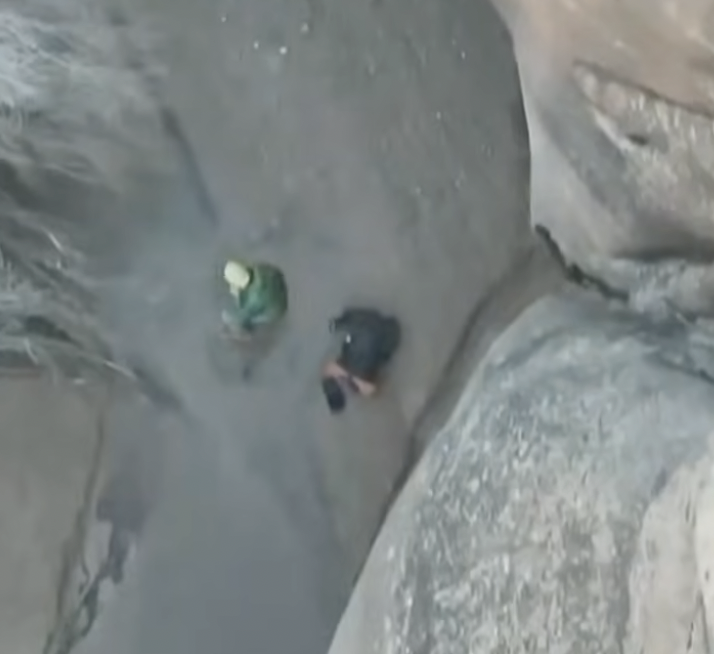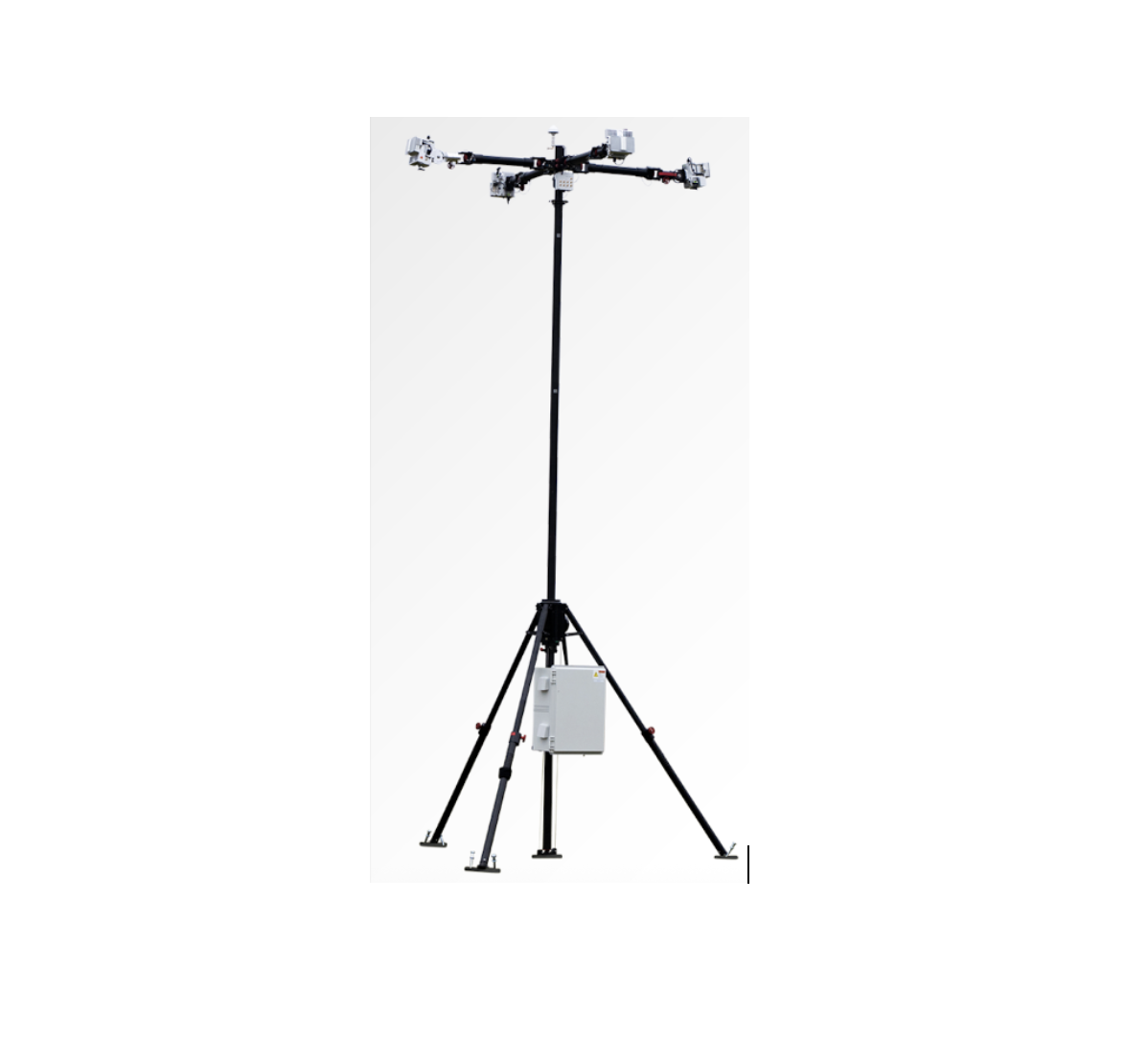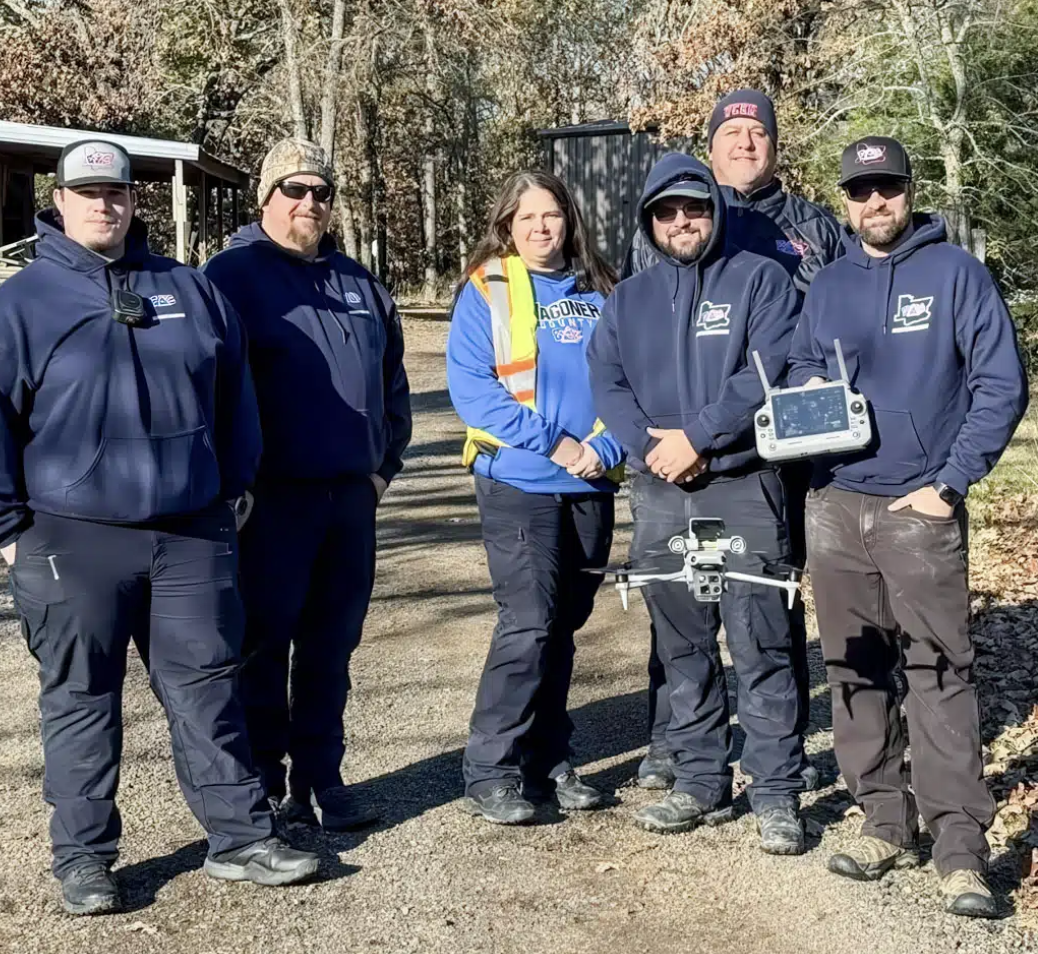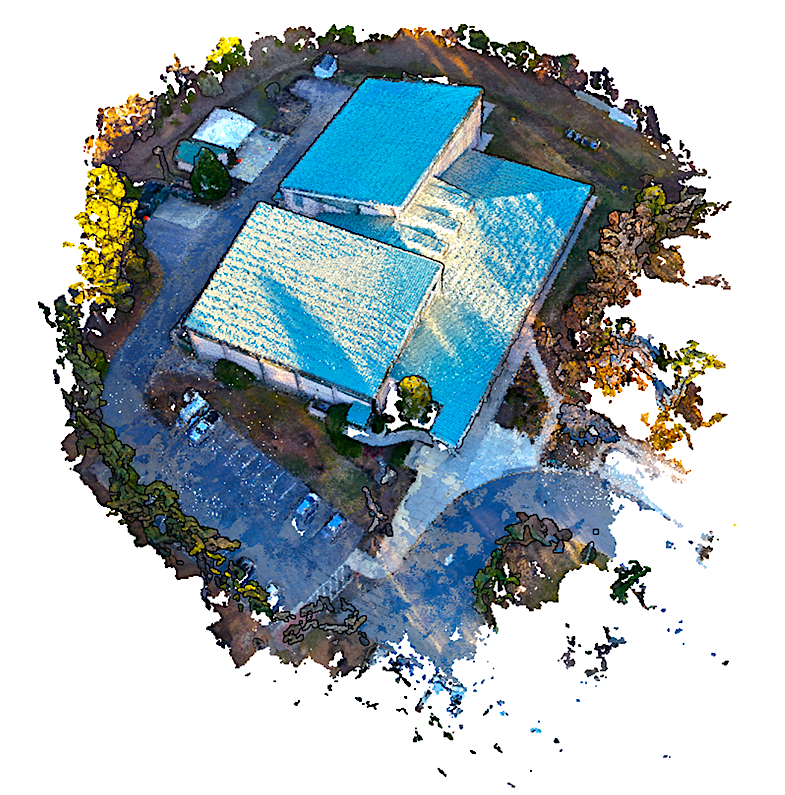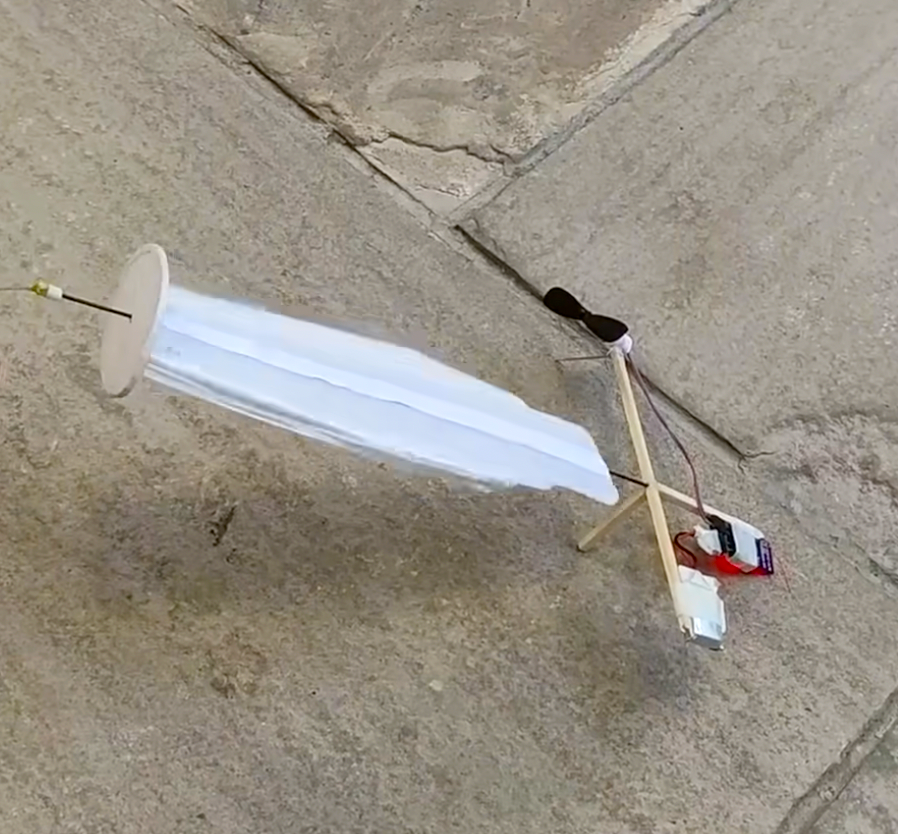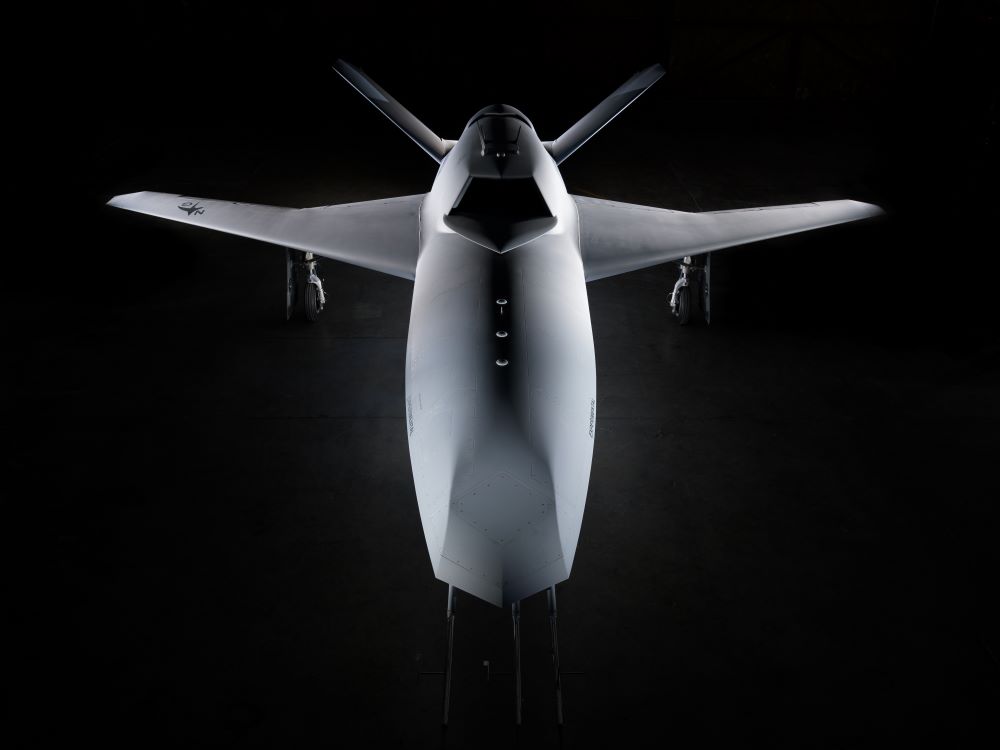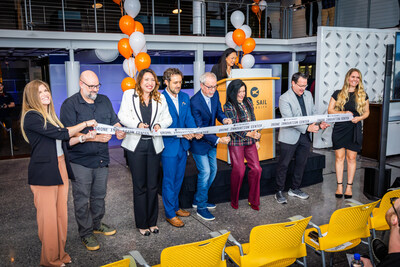Featured NewsDrone EducationProduct NewsK-State Salina: Building the Next Generation of UAS Leaders
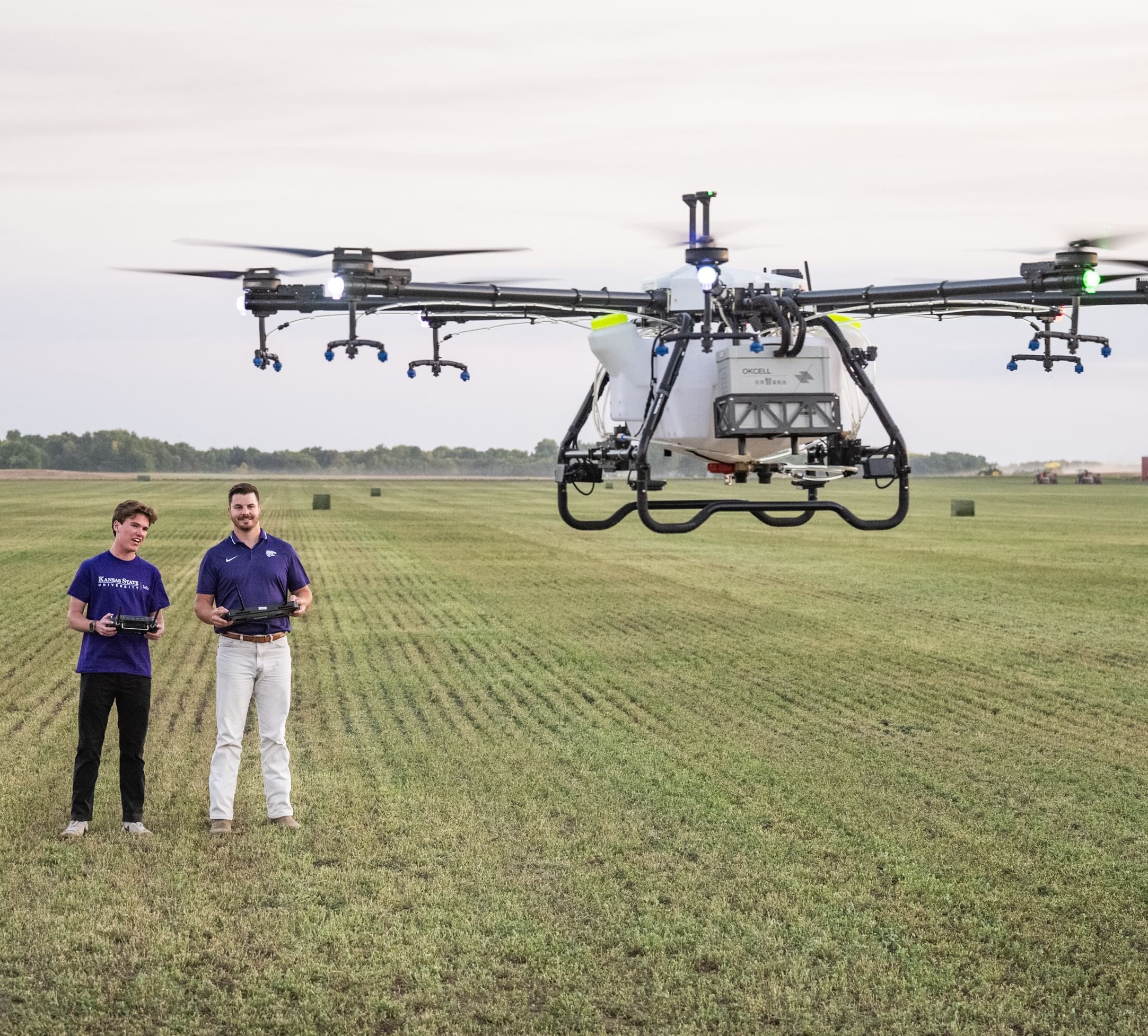
Above photo: A K-State Salina UAS instructor holds a remote control and teaches a student how to operate a multi-rotor drone over farmland.
10 September 2025
In the heart of America’s Great Plains, Kansas State University Salina has become one of the nation’s premier destinations for education, research and applied operations in Uncrewed Aircraft Systems, or UAS. With a rich aviation heritage and a strategic location in Kansas, the campus combines tradition with innovation, creating a unique environment where the next generation of UAS leaders are trained.
The campus’s UAS program stands out for its depth and breadth. K-State Salina allows students to progress from basic multi-rotor operations to advanced experiences flying large aircraft beyond visual line of sight at altitudes up to 3,000 feet. This academic journey, paired with access to real-world research through the Applied Aviation Research Center, ensures graduates leave with not only technical proficiency but also leadership, adaptability and industry-ready skills.
A Foundation for the Future: Academic Progression
The structure of the UAS program at K-State Salina reflects a deliberate strategy to build confidence and competence step by step. Students begin with multi-rotor aircraft, the type most used in commercial sectors such as photography, inspections and surveying. Starting here allows students to learn fundamental concepts, including aircraft control, safety procedures and mission planning, using platforms they are most likely to encounter in industry.
Once students have mastered multi-rotor systems, they move to fixed-wing UAS. Unlike multi-rotors, which excel at hovering and maneuvering in tight spaces, fixed-wing aircraft offer greater endurance and efficiency, making them ideal for applications such as mapping large tracts of land or monitoring infrastructure. Transitioning to fixed-wing flight challenges students to adapt their skills and broaden their operational understanding, preparing them to work across multiple industry sectors.
The next stage introduces hybrid UAS, a rapidly growing category that combines the vertical takeoff and landing capabilities of multi-rotors with the endurance of fixed-wing flight. Hybrids represent one of the most promising areas of UAS development, and students at K-State gain direct experience with these systems long before many of their peers at other institutions. By working with hybrids, students explore the cutting edge of UAS versatility, preparing for roles where adaptability and forward-thinking innovation are crucial.
Finally, students also pursue an instructor upgrade. This advanced track allows them to step into leadership roles within the program by training their peers and refining their communication and mentoring skills. By the time they graduate, students have flown a wide range of platforms and demonstrated the ability to teach and lead, qualities employers value highly in today’s competitive UAS workforce.
Beyond the Basics: Advanced UAS Operations
K-State Salina pushes far beyond the traditional boundaries of Part 107. Students gain hands-on experience with advanced operations that mirror the complex realities of the industry.
First, the program emphasizes beyond visual line of sight operations, or BVLOS. These are among the most transformative experiences for students, as BVLOS capabilities are critical for commercial applications such as long-range infrastructure inspections, agricultural monitoring and package delivery. At K-State Salina, students not only learn the theory of BVLOS but also actively engage in missions under controlled environments, giving them practical insight into one of the most valuable skill sets in the industry.
Second, students are trained to operate at altitudes up to 3,000 feet above ground level. This is well above the standard operational ceiling for most UAS programs and exposes them to the complexities of working in shared airspace. It requires a deep understanding of air traffic management, communication protocols and risk mitigation strategies. By preparing students for operations at these altitudes, K-State Salina ensures they are ready for the challenges of integrating UAS into the broader national airspace system.
Third, the program provides exposure to UAS weighing more than 55 pounds. K-State Salina offers opportunities for students to work with large platforms that are increasingly in demand across industries such as agriculture, cargo, and defense. This training sets the campus’s graduates apart, as they enter the workforce with operational knowledge of systems few students ever touch before employment.
By integrating these advanced operations into the curriculum, K-State Salina ensures that students meet and exceed the minimum standards of UAS training. They leave equipped to take on the most complex challenges the industry has to offer.
The Applied Aviation Research Center: A National Asset
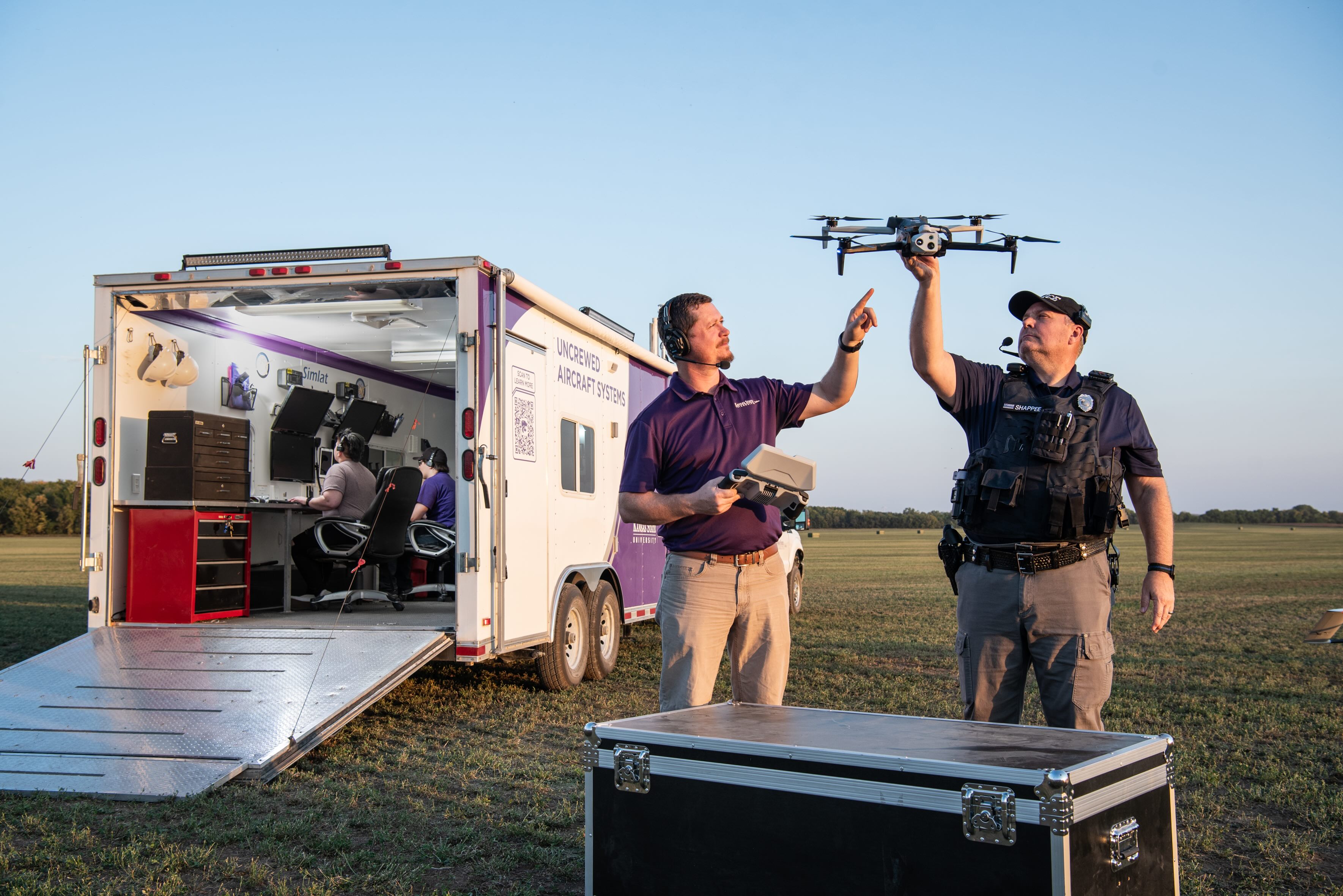
K-State Salina's Applied Aviation Research Center provides extensive public safety drone training, guidance and research for law enforcement and other professional industries.
At the core of K-State’s UAS program is the Applied Aviation Research Center, or AARC, a facility that bridges the gap between academia, industry and the federal government. Established to advance aviation research and support national priorities, the AARC is both a training ground for students and a hub of innovation for the UAS sector.
The center partners with federal and state agencies, private industry and community stakeholders to conduct research and testing in areas critical to the future of UAS. These include detect-and-avoid technologies, advanced air mobility systems, agricultural applications and disaster response. Projects range from evaluating large agricultural drones capable of covering vast fields, detecting and avoiding systems for safe integration of UAS into shared airspace, and developing strategies for deploying drones in emergencies such as floods, wildfires or tornadoes.
For students, this means more than just classroom learning. Through internships, research assistantships and project-based learning, they gain firsthand experience contributing to initiatives directly impacting the state and national levels. AARC involvement also connects students to industry leaders and policymakers, giving them insight into the broader ecosystem of UAS integration.
The result is an environment where students do not simply study technology but help shape its future.
Looking Ahead: Innovation in Curriculum and Pathways
While the program already ranks among the most comprehensive in the country, K-State Salina is actively working to stay ahead of industry demand. One major initiative is exploring reduced-credit degree options, designed to make programs more efficient while maintaining the high standards for which K-State is known. This reflects a broader national trend in higher education to provide students with flexible and affordable pathways that meet the needs of both learners and employers.
The department is also expanding its portfolio of certificates and micro-credentials. These offerings allow professionals already working in the field, or those seeking a career transition, to access targeted training in areas such as UAS data analytics, agricultural applications, or advanced operations. By catering to traditional students and lifelong learners alike, K-State Salina ensures it remains responsive to the changing dynamics of the workforce.
Another area of growth is the development of pipeline opportunities. By collaborating with high schools, community colleges, and workforce partners, the program creates clear entry points for students of all backgrounds to pursue UAS careers. Concurrent enrollment programs allow high school students to begin earning college credit in UAS, while partnerships with school districts introduce students to the field through initiatives like drone racing leagues and STEM (Science, Technology, Engineering and Mathematics) outreach events. These efforts ensure that the next generation of UAS professionals is both inspired and well-prepared before they even arrive on campus.
Why It Matters: National Significance
The UAS industry is one of the fastest-growing sectors of aviation, with applications ranging from logistics and agriculture to emergency response and infrastructure inspection. Yet the industry faces a significant challenge because the demand for skilled professionals far outpaces supply. K-State Salina aims to address this gap by producing graduates who are not only technically proficient but also adaptable, safety-conscious and confident leaders.
Kansas offers unique advantages for this work. With wide open skies, a strong aviation tradition and supportive state agencies, the environment is ideal for UAS training and research. However, the significance of K-State’s program extends far beyond the state’s borders. By pushing the boundaries of advanced operations, integrating academic rigor with real-world research and preparing students for leadership roles, K-State Salina is shaping the national conversation on how UAS can safely and effectively be integrated into society.
Graduates leave with more than a diploma. They carry practical experience in BVLOS operations, high-altitude missions and large aircraft systems. They have worked alongside researchers at the AARC and engaged with industry leaders on projects of national importance. This combination of experiences ensures that K-State alums enter the workforce ready to contribute and to lead.
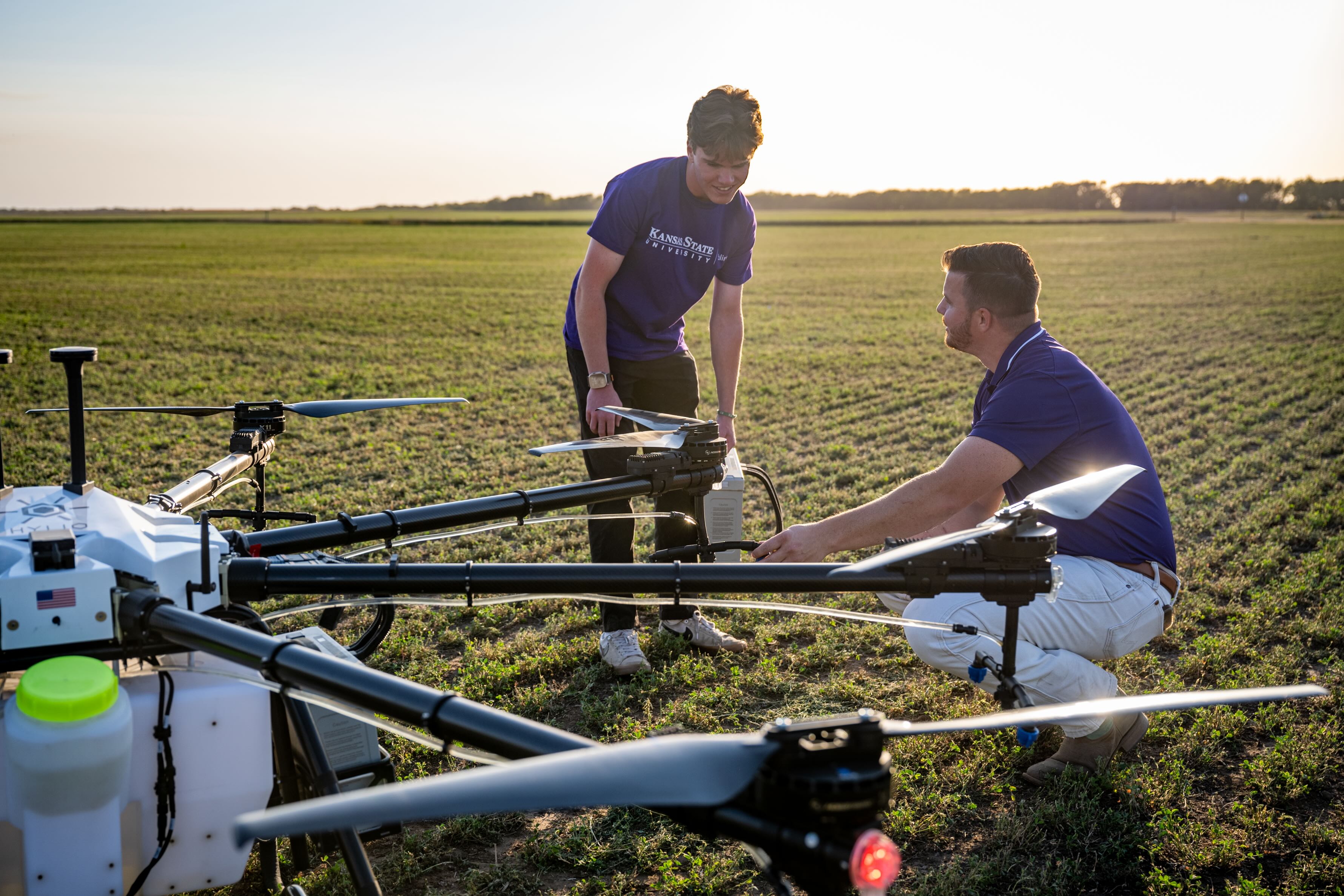
A K-State Salina student looks at a large multi-rotor drone while a UAS instructor explains how it operates.
Conclusion
Kansas State University Salina is more than an academic institution. It is a launchpad for the future of uncrewed aviation. Through a carefully structured training progression, exposure to advanced operations, and engagement with cutting-edge research at the Applied Aviation Research Center, the program equips students with the skills and experiences that set them apart in the industry.
As UAS continues to transform industries, reshape communities and expand the boundaries of what is possible in aviation, K-State Salina is a national leader in preparing the professionals who will guide that transformation. From their first flight on a multi-rotor system to contributing to research that influences national policy, students at K-State do not simply learn about the future of aviation. They create it.
